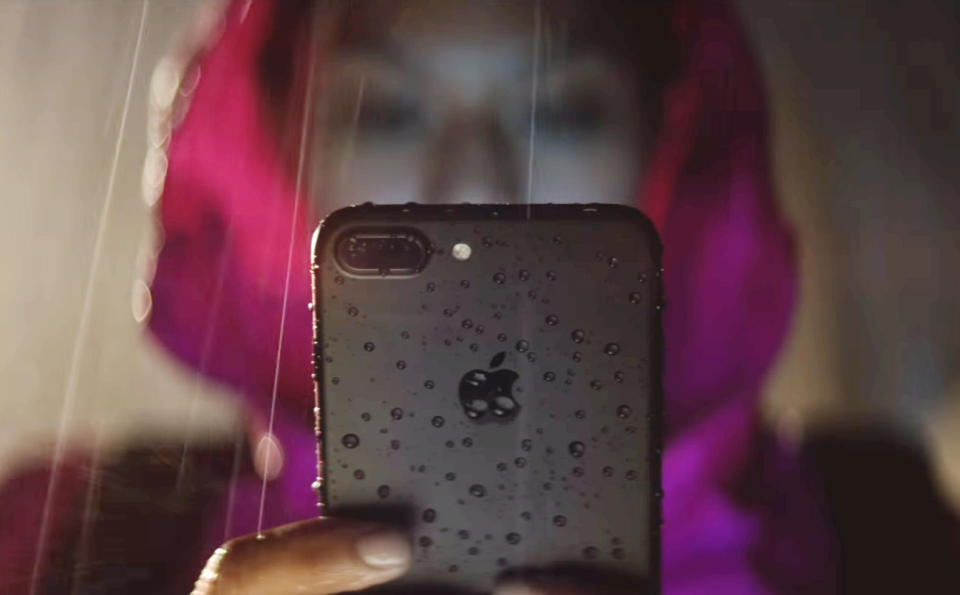The iPhone 7's best new feature is water resistance
Who cares about a dual camera when you can take this phone to the throne?

Once again, Apple has dropped a new phone with a whole array of improvements that make it a must-buy. But the iPhone maker buried the lead with its launch by barely touching on the next-gen phones' actual best feature: water-resistance.
I know it's going to be difficult to justify this. but hear me out. The iPhone 7's water-resistance is awesome because it not only solves an age-old problem for a whole lot of people but could mean a better future for everyone.
A lot of people will point to the new dual camera (which by the way is only on the pricier Plus) or iOS 10 as better choices. But a lack of emojis, inadequate 3D Touch integration or poorly taken pictures hasn't actually ruined someone's day or cost anyone money. Those are nice things to have, but not absolutely necessary.
On the other hand, water damage is such a big problem it's spawned a whole subculture of people that find unique ways to fix wet phones. A 2012 study by device warranty provider SquareTrade found that water damage was the second leading cause of destroyed phones, just behind drops.
While the iPhone 7 probably still isn't rugged enough to survive a fall down the stairs, its ability to withstand some splashes, specifically up to 1 meter (3.2 feet) of water, will bring some of us klutzes peace of mind. Because let's be real -- who doesn't bring their phone into the bathroom to while away some throne time?
The water-resistance has some other outside-the-loo benefits as well, protecting the new phones from accidental spills at the dinner table or drops into puddles. Plus, built-in water protection means we can say goodbye to bulky waterproof cases that jut out of our pockets. But Apple could also stand to gain.

Pictured above: The water-resistant Galaxy S7 Active.
With their IP67 rating, the iPhone 7s are just slightly less water-friendly than rival Samsung's latest Galaxy S7 and S7 Edge (both rated IP68). The Korean company's handsets can survive for up to 30 minutes under up to 1.5 meters of water. That's one aspect in which Samsung has been ahead of Apple for three years now (water-resistance made its way to the Galaxy S line on the S4 Active).
Other companies, such as Sony and Motorola, have already acknowledged the importance of the feature and have implemented it in their flagships for years now. But even though more than a handful of firms have made watertight smartphones, the rest of the industry hasn't followed suit. And here's where Apple joining the fray could mean good things for everyone.
The Cupertino company has long pioneered features that are now ubiquitous, such as apps, fingerprint sensors and a home button. But when Apple follows its rivals on something, as it did on NFC implementation for mobile payments and, now, water-resistance, the rest of the industry tends to jump wholeheartedly on the bandwagon. This could mean a future where a watertight phone is the norm rather than the exception.
Click here to catch all the latest news from Apple's "See You" event.













